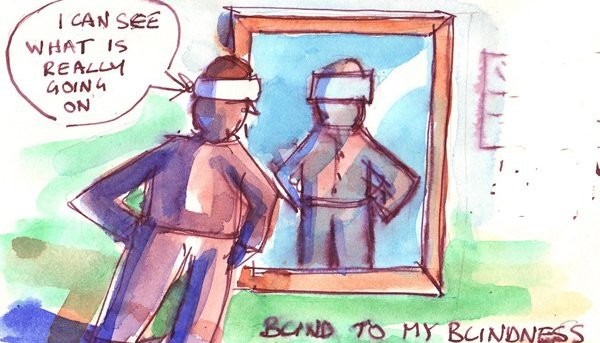
Increasing Your Self-Awareness: The Johari Window
The Johari Window Test was designed by Joseph Luft and Harry Ingham in 1955 to help people to understand and know themselves better, seek self-improvement, as well as to understand their relationships with other people or teams. The Johari Window (whose name comes from the combination of the names Joseph and Harry) is a simple yet powerful tool for self-awareness.
In order to get the most out of the exercise, participants need to be working with some other people who know them well. For instance, family members, co-workers, friends, etc. The individuals who are constructing their Johari Window, as well as any other individuals who are doing the exercise with them, are asked to pick the adjectives that best define them from the list of 55 adjectives below:
- able, accepting, adaptable, bold, brave, calm, caring, cheerful, clever, complex, confident, dependable, dignified, energetic, extroverted, friendly, giving, happy, helpful, idealistic, independent, ingenious, intelligent, introverted, kind, knowledgeable, logical, loving, mature, modest, nervous, observant, organized, patient, powerful, proud, quiet, reflective, relaxed, religious, responsive, searching, self-assertive, self-conscious, sensible, sentimental, shy, silly, spontaneous, sympathetic, tense, trustworthy, warm, wise, witty
As seen below, the Johari Window is comprised by four rooms or windows:
The vertical axis represents those characteristics, represented by the adjectives, that are known or unknown to others about ourselves. The horizontal axis also represents the characteristics that are known or unknown to ourselves. When the participants in the exercise (those who are building their Johari Window, and those who are doing the exercise with them) select the adjectives, a Johari Window can be built following these instructions:
- Open-self room: these are the adjectives selected by the self and those who are participating with him or her in the exercise. This window represents those characteristics that are known both to the self and to others
- Blind-self room: these are the adjectives selected by others, but not by the self. It represents those characteristics that others think about us, but we don’t know about ourselves. These are the blind spots, or characteristics that we are not aware of.
- Hidden-self room: these are the adjectives selected by the self, but not by others. This window represents those things that we know about ourselves, but are unknown to others
- Unknown-self room: these are the adjectives that were not selected by the self or by the others. Some of these characteristics might not apply at all to ourselves, nevertheless, they create another level of awareness.
The rooms in the Johari Window usually don’t remain the same size, as there are things known to others that we don’t know about ourselves, or things known to us that others don’t know, or simply are not known to any.
Some of the principles behind the Johari Window are:
- If the size of one window changes, it will affect the area of other windows
- A small window or room may reflect an area for development in interpersonal communications
- The exercise is based on openness and trust between the person taking the Johari Window and those participating with him or her. Ultimately, it creates more self-awareness
The important idea behind the Johari Window is that it can help us better understand more about ourselves, which ultimately creates another level of self-awareness. This is a very basic and simple tool, although it gives us useful information as to how others see us and how we see ourselves in relation to them. The results of the Johari Window might be different depending on whether we do the exercise with friends, coworkers, or family. You can do the exercise with people in all three groups and then analyze the results. For instance, you coworkers could see you as shy, but maybe your family sees you as spontaneous. You can also add new adjectives/traits that you are interested in determining whether people around you see that in you.
------------------------------------------------------------------------------------------
About the Author: Enrique Rubio is an HR Professional at the Inter-American Development Bank. He is an Electronic Engineer and a Fulbright scholar with an Executive Master’s Degree in Public Administration from Syracuse University. Enrique researches and writes about leadership and HR and seeks to explore the overlaps of productivity and leadership in the business and non-profit world. Enrique is also a competitive ultrarunner.
Twitter: @erubio_p
#leadership #innovation #creativity #learning #knowledge #progress #personal #value #development #self-improvement #self-actualization

RN at Yavapai Regional Medical Center
6yReally would like to learn more
Happily Retired
8yHelpful information and insights. Thank you Enrique!
ADHD Coach | Educational Therapist | Transforming Parents Lives
8yThanks Enrique! I look forward to using this helpful and useful tool! I like the concrete visual of the rooms .
CX Consultant | Data & Insights senior analyst | Product and Service developer
8yExcelent tools that do help!! Regards!!
President Americas
8yAnother great article. Word to the wise: Enrique is well worth reading.